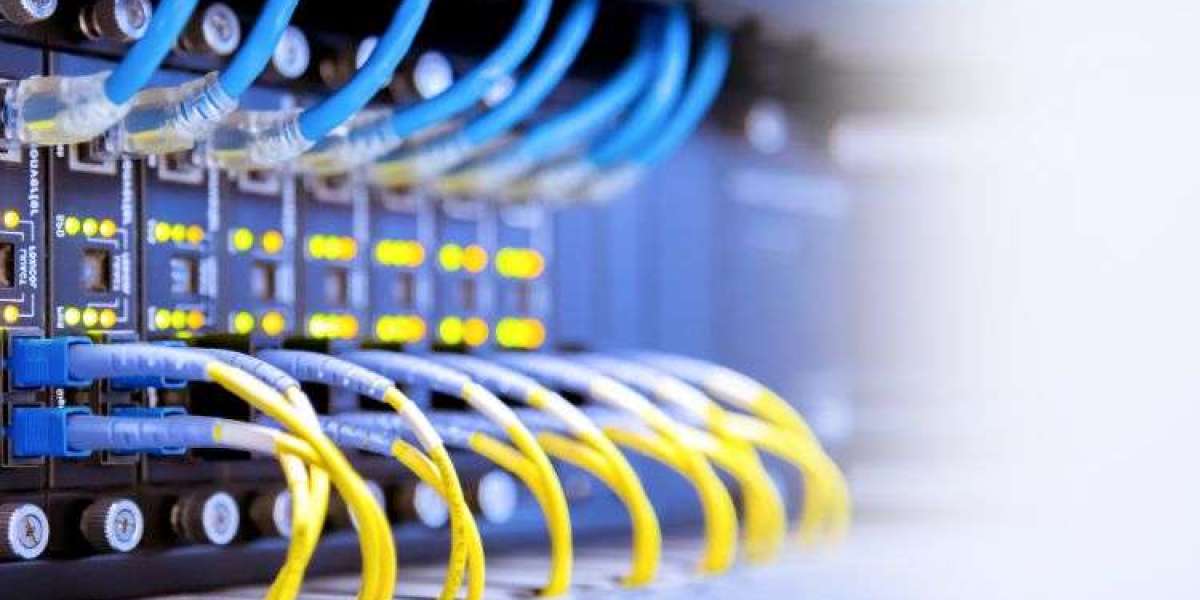The global GPON market size is projected to grow at a Compound Annual Growth Rate (CAGR) of 6% in the forecast period of 2024-2032, reaching a value of USD 12.49 billion by 2032. This growth underscores the increasing demand for high-speed broadband connectivity solutions, particularly in the wake of digital transformation initiatives across various industries. In this context, the choice between GPON (Gigabit Passive Optical Network) and EPON (Ethernet Passive Optical Network) technologies becomes crucial for businesses seeking to optimize their network infrastructure for efficiency, reliability, and cost-effectiveness.
This comprehensive guide aims to provide businesses with a detailed understanding of GPON and EPON technologies, comparing their features, advantages, and limitations. By delving into the nuances of these optical network technologies, businesses can make informed decisions that align with their specific networking requirements and objectives.
Understanding GPON (Gigabit Passive Optical Network)
GPON is a fiber-optic telecommunications technology that utilizes passive optical splitters to enable a single optical fiber to serve multiple premises. This passive splitting reduces the amount of fiber and central office equipment required compared to traditional point-to-point architectures.
GPON operates on a point-to-multipoint topology, where a single optical line terminal (OLT) located at the service provider's central office communicates with multiple optical network units (ONUs) or optical network terminals (ONTs) at customer premises. This architecture allows for high-speed data transmission over long distances, making GPON an ideal solution for broadband access networks, fiber-to-the-home (FTTH) deployments, and enterprise connectivity solutions.
Key features and advantages of GPON technology include
High bandwidth capabilities: GPON supports symmetrical and asymmetrical data rates, with downstream speeds of up to 2.5 Gbps and upstream speeds of up to 1.25 Gbps per subscriber. Scalability for future growth: GPON networks are inherently scalable, allowing for easy addition of new subscribers and services without significant infrastructure upgrades. Distance limitations and considerations: GPON technology supports long-distance transmission of data over fiber-optic cables, making it suitable for deployments spanning several kilometers. Security features: GPON networks incorporate encryption and authentication mechanisms to protect data transmission and ensure network integrity. Use cases and industries where GPON is commonly deployed include:
Residential broadband: GPON enables high-speed internet access for households, supporting bandwidth-intensive applications such as video streaming, online gaming, and remote work. Enterprise networks: GPON provides reliable and high-performance connectivity solutions for businesses, supporting voice, data, and video communications, as well as cloud-based applications and services. Smart city infrastructure: GPON facilitates the deployment of smart city initiatives, such as smart lighting, traffic management, and environmental monitoring, by providing robust and scalable networking capabilities. Exploring EPON (Ethernet Passive Optical Network):
EPON, also known as Gigabit Ethernet PON (GEPON), is a fiber-optic telecommunications technology based on Ethernet standards. EPON utilizes a point-to-multipoint topology similar to GPON, where a single OLT communicates with multiple ONUs or ONTs at customer premises.
EPON operates using Ethernet frames, making it compatible with existing Ethernet infrastructure and equipment. This compatibility simplifies deployment and integration with existing networking systems, reducing costs and complexities for businesses with established Ethernet networks.
Key features and advantages of EPON technology include
Cost-effectiveness: EPON offers lower upfront costs compared to GPON, making it an attractive option for businesses with budget constraints or cost-sensitive projects. Compatibility with existing Ethernet infrastructure: EPON leverages standard Ethernet protocols and equipment, allowing for seamless integration with existing switches, routers, and other networking devices. Flexibility in deployment scenarios: EPON supports various deployment scenarios, including point-to-point, point-to-multipoint, and ring topologies, offering flexibility and scalability for different networking requirements. However, EPON may have limitations compared to GPON in terms of bandwidth and throughput, particularly in larger-scale deployments. EPON typically supports lower data rates compared to GPON, which may impact performance in bandwidth-intensive applications or densely populated areas.
Comparing GPON and EPON
When comparing GPON and EPON, several factors need to be considered to determine the optimal solution for specific networking requirements and objectives. These factors include:
Performance: GPON generally offers higher bandwidth and throughput compared to EPON, making it suitable for high-speed internet access and bandwidth-intensive applications. GPON's symmetrical and asymmetrical data rates provide flexibility to accommodate various user needs and usage patterns. Cost: The cost of deploying GPON versus EPON involves consideration of upfront investment costs, operational expenses, and long-term return on investment. While GPON may require higher initial investment due to its advanced technology and equipment, it offers long-term cost savings through scalability and efficiency. Scalability: GPON networks are inherently scalable, allowing for easy addition of new subscribers and services without significant infrastructure upgrades. EPON networks may require more extensive upgrades to accommodate growing bandwidth demands, potentially leading to higher costs and complexities. Compatibility: GPON and EPON have different requirements and considerations regarding compatibility with existing infrastructure and equipment. GPON may require specialized OLT equipment, whereas EPON can leverage existing Ethernet switches and routers, reducing deployment costs and complexity. Security: Both GPON and EPON offer various security mechanisms to protect data transmission and network integrity. However, businesses should carefully evaluate the security features of each technology and ensure compliance with industry standards and regulations. Factors to Consider When Choosing Between GPON and EPON:
When deciding between GPON and EPON for their optical network infrastructure, businesses should consider several factors to ensure alignment with their specific networking requirements and objectives. These factors include:
Business requirements and objectives: Assessing current and future networking needs, including bandwidth requirements, scalability, and growth projections. Budget constraints and cost considerations: Evaluating upfront investment costs, operational expenses, and long-term return on investment to determine the most cost-effective solution. Network size and scalability needs: Determining the scale of deployment, number of users, and potential expansion requirements to ensure scalability and flexibility. Integration with existing systems and infrastructure: Considering compatibility with existing Ethernet or fiber-optic networks, equipment, and software to minimize deployment costs and complexities. Long-term growth and expansion plans: Planning for future growth, technological advancements, and evolving business needs to ensure scalability and flexibility over time.
Case Studies and Real-World Examples
To illustrate the practical implications of choosing between GPON and EPON, let's consider two hypothetical case studies:
Case Study 1: XYZ Corporation is a medium-sized enterprise operating in a competitive market environment. The company recently experienced growth in its workforce and expansion of its operations, necessitating an upgrade of its network infrastructure to support increasing bandwidth demands and facilitate seamless communication and collaboration among employees. After conducting a thorough analysis of various optical network technologies and consulting with networking experts, XYZ Corporation decides to deploy GPON technology due to its high bandwidth capabilities, scalability, and future-proofing advantages. By implementing GPON, XYZ Corporation achieves significant improvements in network performance, reliability, and cost-efficiency, enhancing productivity and competitiveness in the market.
Case Study 2: ABC Internet Service Provider (ISP) is planning to expand its broadband services to rural areas with limited connectivity options. The company aims to bridge the digital divide and empower local residents with access to high-speed internet connectivity, thereby stimulating economic growth and development in underserved communities. After evaluating various optical network technologies and considering factors such as cost-effectiveness, scalability, and deployment flexibility, ABC ISP opts for EPON technology. EPON's compatibility with existing Ethernet infrastructure and lower upfront costs make it an attractive option for extending broadband services to rural areas. By leveraging EPON technology, ABC ISP successfully extends its broadband services, enabling local residents to access educational resources, healthcare services, and economic opportunities previously unavailable to them.








